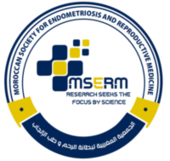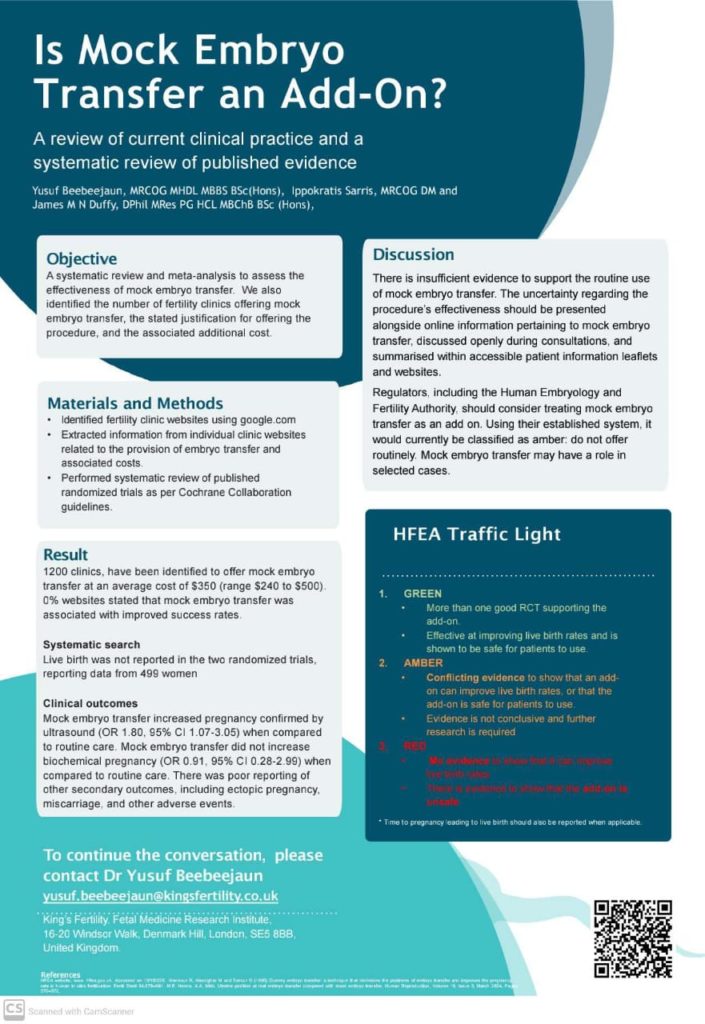Track: ART – LAB, Assisted Reproductive Technology
Poster : ART Lab: Technology
Yusuf Beebeejaun
Reproductive Medicine Research Fellow
King’s Fertility
London, United Kingdom
Objective: A systematic review and meta-analysis to assess the assess the effectiveness of mock embryo transfer. We also identified the number of fertility clinics offering mock embryo transfer, the stated justification for offering the procedure, and the associated additional cost. DESIGN: Systematic examination of fertility clinic websites and systematic review of published randomized trials evaluating the effectiveness of mock embryo transfer. MATERIALS AND
Methods: We identified fertility clinic websites using google.com. Information was extracted from individual clinic websites related to the provision of embryo transfer and associated costs. The systematic review of published randomized trials was prepared by following Cochrane Collaboration guidelines. Selection of studies, assessment of trial quality, and extraction of relevant data were performed independently by two researchers. Summary estimates and 95% confidence intervals were calculated using random-effects methods.
Results: Worldwide 1,200 clinics and fertility networks, have been identified to offer mock embryo transfer at an average cost of $350 (range $240 to $500). 40 % of identified clinic websites stated that mock embryo transfer was associated with improved success rates. The systematic search of published literature identified two randomized trials, reporting data from 499 women. Live birth was not reported. Mock embryo transfer increased pregnancy confirmed by ultrasound (OR 1.80, 95% CI 1.07-3.05) when compared to routine care. Mock embryo transfer did not increase biochemical pregnancy (OR 0.91, 95% CI 0.28-2.99) when compared to routine care. There was poor reporting of other secondary outcomes, including ectopic pregnancy, miscarriage, and other adverse events.
Conclusions: There is insufficient evidence to support the routine use of mock embryo transfer. The uncertainty regarding the procedure’s effectiveness should be presented alongside online information pertaining to mock embryo transfer, discussed openly during consultations, and summarised within accessible patient information leaflets and websites. Regulators, including the Human Embryology and Fertility Authority, should consider treating mock embryo transfer as an add on. Using their established system, it would currently be classified as amber: do not offer routinely. Mock embryo transfer may have a role in selected cases.
ASMR official sponsorship in the publications of the virtual ASMR conference October 17-21 October 2020

